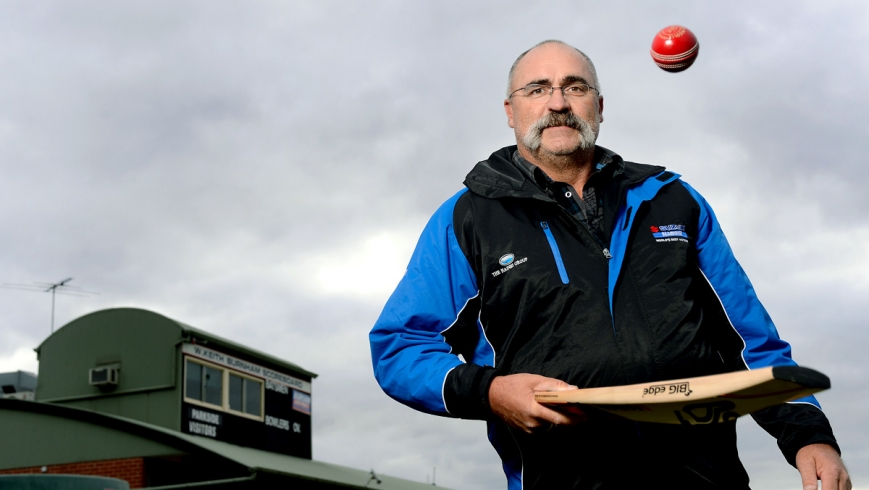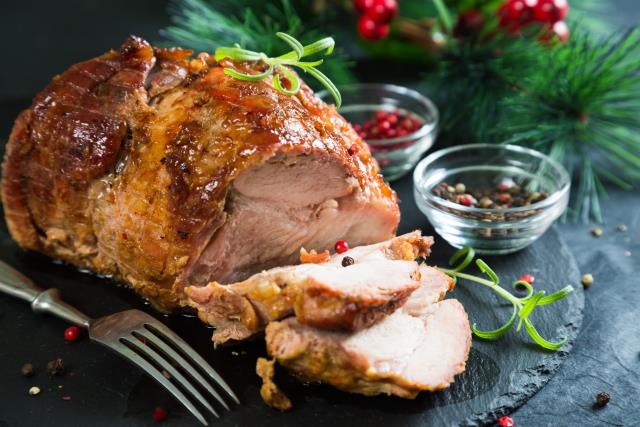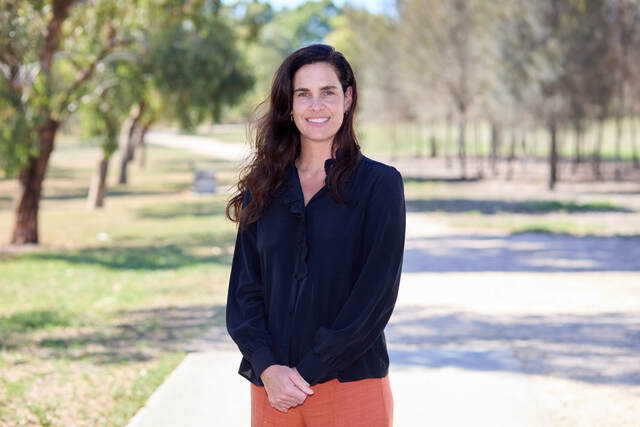There’s a lot going on behind, and slightly north of, Merv Hughes’ trademark moustache and countless kilometres beneath those sometimes wonky knees, writes Robert Fedele.
THE name Merv Hughes conjures up a kaleidoscope of images.
An imposing figure, burly and brash, Hughes was a useful right-arm fast bowler with a finicky run-up that seemed to stretch the length of an Olympic-sized swimming pool.
He played in a golden era of Australian cricket and is best remembered as a likeable larrikin, with his handlebar moustache, usually covering a cheeky grin, capturing nearly as much attention as the man himself.
When we meet at an Essendon coffee shop on a crisp winter’s morning it’s the first thing that registers.
‘‘I’ve had the mo since 1985,’’ Hughes chuckles. ‘‘Growing up, two of my biggest heroes were Max Walker and Dennis Lillee so I think I was destined to grow a moustache.’’
Hughes has lived in Essendon for two decades and is a regular at the North Essendon Village shopping strip.
‘‘It’s interesting. You’re sort of part of the furniture here, but I find if you go somewhere new it’s a bit of a big deal.’’
Does the limelight annoy him?
‘‘The benefits outweigh the negatives, but there are times when you just want to go and hide somewhere and have a quiet coffee and you get hammered a bit. That’s part and parcel of it. At the end of the day, you can’t really complain if people enjoy what you did.’’
Hughes’ sporting aspirations began in childhood. His father was a school teacher and the family moved around so much his upbringing was akin to a cricket ball being smacked to all corners of the ground.
He was born in Euroa, but Apollo Bay, Werribee, Violet Town and Myrtleford were all places young Hughes called home. Werribee resonates with him most strongly.
‘‘Moving around a lot, [Dad] was adamant that you meet people if you play sports.’’
Hughes ate up football, cricket and basketball. But he never dreamed of wearing the baggy green cap.
‘‘As a 16, 17, 18-year-old, all I wanted to do was play footy. Cricket took a backseat.’’
A robust and talented defender, Hughes played for Werribee in the Victorian Football Association (now VFL) and was invited to train with Geelong for a couple of nights, ‘‘but it just didn’t work out’’.
It was the late ’70s and a time of upheaval when media mogul Kerry Packer turned cricket on its head by dreaming up the renegade World Series Cricket. And there had been a few retirements in the Victorian cricket team, so Hughes was called up to the squad.
‘‘When I got down to Geelong I was playing cricket at Footscray, and the cricket took off a bit,’’ he recalls.
Hughes made his Victorian debut in 1981 against South Australia in a one-day match. Four years later the national side beckoned and Hughes quickly became a crowd favourite, with thousands mimicking his customary stretches.
It was 1988, a one-day match between Australia and Pakistan at the MCG. Australia had opened the batting and had posted a handy score. Carl Rackemann and Terry Alderman snared early wickets, but rain stopped play with Pakistan in quicksand.
The crowd had turned restless, boredom setting in, and Hughes began to limber up.
‘‘I heard a big roar behind me, but every time I looked around there was nothing. So I started the stretching again. There’s a bit of a roar and the same thing.
‘‘I ran and bowled my over and Dean Jones came across to me and said, ‘Do you know what’s going on down there? Every time you do an exercise there’s about 10,000 people behind you doing the same thing’. And you think, well how good’s that?’’
The MCG is full of memorabilia of famous sporting moments and Hughes finds the funny side in the fact there is a photo of him stretching in front of the infamous Bay 13. “A lot of people remember my career because of that and you think, ‘mate, give me a bit of credit’.”
To concentrate only on Hughes the showman would be an injustice to a handy bowler who gave his all. He represented Australia between 1985 and 1994, playing 53 Tests and taking 212 wickets.
Former Australian captain Ian Chappell observed Hughes from the commentary box.
‘‘He gave everything he had to try and help his team win,’’ Chappell says. ‘‘Merv is a great example to all budding young fast bowlers … if you have some skill and give it everything you’ve got, you can succeed.’’
As he tucks into a sandwich, Hughes recollects his career, detailing mateship, mayhem and triumph. When he first got into the national side in December, 1985, the environment, he says, was edgy, cricket still recovering from the turmoil of World Series. He says it took a few years to swing that attitude around, and he credits the change to the influence of Allan Border, coach Bob Simpson, and wide-eyed wicketkeeper Ian Healy.
Hughes’ first tour was with the famed 1989 Ashes-recapturing side in England. Australia, pinned as underdogs, took out the six-Test series 4-0. He would return in 1993 for the Ashes, celebrating another victory this time with the cream of Australia’s youth in the likes of Damien Martyn, Shane Warne, Matthew Hayden and Michael Slater.
‘‘In 1989 I was very much a junior player within the set-up, and four years later you go over as an experienced player and you watch these young blokes come through and you just think: ‘I knew they were good players, but I didn’t think they were gonna be that good’.’’
When his career finally wound down in 1994, he was, he says, physically knackered.
He admits he could have looked after his weight more but has seemingly no lasting regrets. ‘‘I loved my food, loved my drink. Ultimately, it probably did cost me.”
Following a two-year stint with the Canberra Comets and a couple of years in the Footscray seconds, Hughes kept his hand in the game, helping develop young junior teams at Victorian level and seeing the likes of Cameron White and Peter Siddle come through.
In 2005 he became an Australian selector, but was sacked five years later.
Nowadays, Hughes’ main gig is as a tour host with Australian Sports Tours, following Australian cricket tours around the world with die-hard fans.
Back home he is on the committee at Footscray-Edgewater and speaks fondly of the club where he cut his teeth. He seems genuinely humbled by the fact they chose to name the ground after him.
Outside of cricket, his passions revolve around the Western Bulldogs, golf, and fishing.
‘‘My wife Sue constantly tells me there’s a fine line between fishing and sitting in a boat, holding a rod and not catching anything, which is what I tend to do a fair bit,’’ he laughs.







